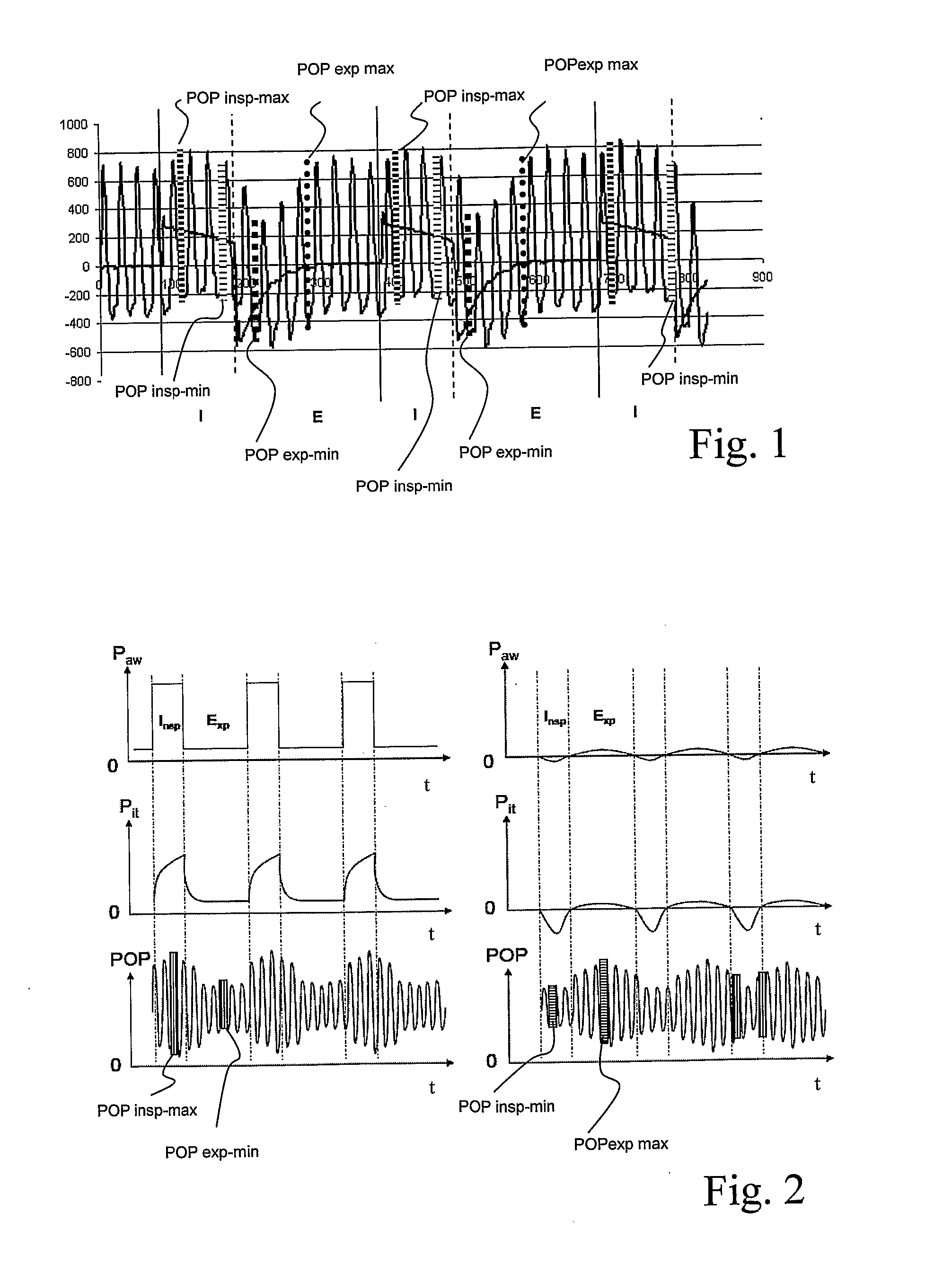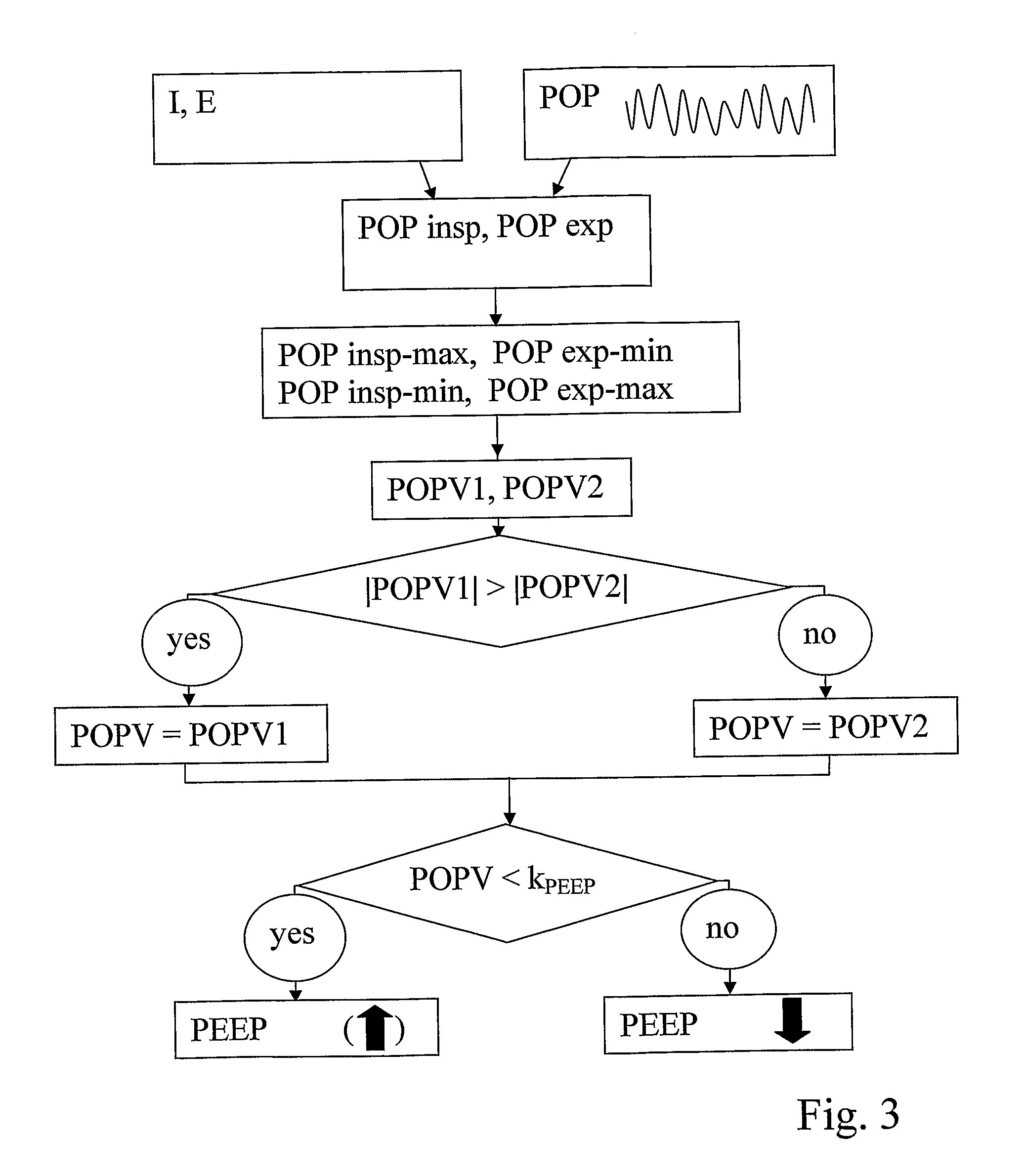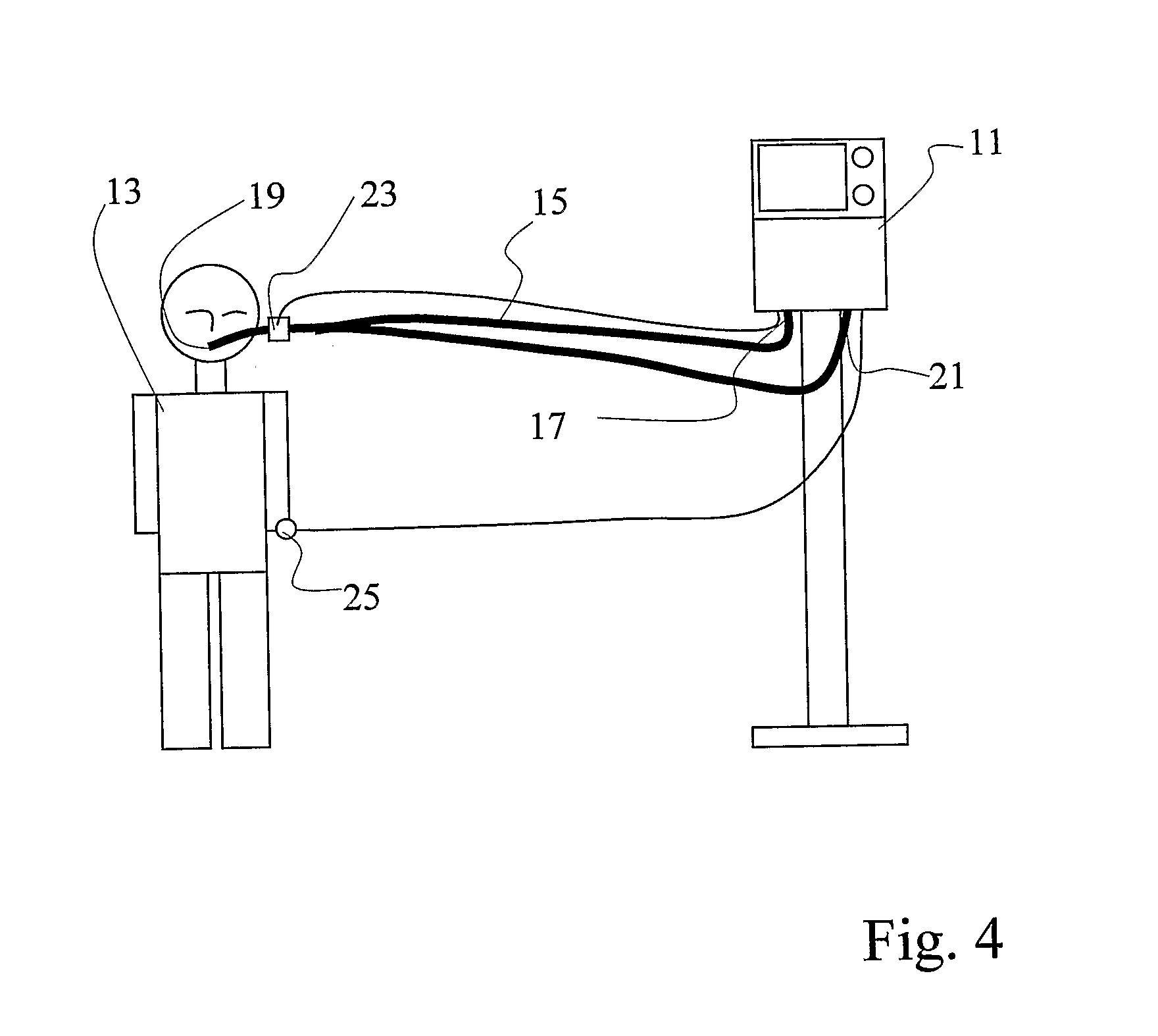Apparatus for assessing the stress on the circulation of a person during assisted breathing by means of a respirator
a technology of respirator and apparatus, which is applied in the field of apparatus for assessing the stress on the circulation of a person during assisted breathing, can solve problems such as unsuitable values, and achieve the effects of continuously assessing the stress on the circulation, non-invasively, and reliable determination of the haemodynamic stress on the person
- Summary
- Abstract
- Description
- Claims
- Application Information
AI Technical Summary
Benefits of technology
Problems solved by technology
Method used
Image
Examples
Embodiment Construction
[0043]The respiratory cycles of a person mechanically respirated by means of positive respiration pressure, diagrammatically shown in FIG. 1, are illustrated by the flow curve of the respiratory gas. A solid line marks the beginning of the inspiratory phase and a broken line the beginning of the expiratory phase. The plethysmogram of a pulse oximeter is laid over this flow curve. The plethysmographic wave form correlates with the flow curve. In a similar manner it also correlates with a pressure curve (not shown here), be this based on the pressure of the respiratory gas or an internal pressure of the thorax.
[0044]The plethysmogram illustrates a wave form with superimposed waves. One of the waves shows the pulse frequency, the other the respiratory frequency. The maxima of the plethysmogram in the pulse frequency increase in the respiratory frequency during the course of the expiratory phase and at the start of the inspiratory phase and decrease again during the course of the inspir...
PUM
 Login to View More
Login to View More Abstract
Description
Claims
Application Information
 Login to View More
Login to View More - R&D
- Intellectual Property
- Life Sciences
- Materials
- Tech Scout
- Unparalleled Data Quality
- Higher Quality Content
- 60% Fewer Hallucinations
Browse by: Latest US Patents, China's latest patents, Technical Efficacy Thesaurus, Application Domain, Technology Topic, Popular Technical Reports.
© 2025 PatSnap. All rights reserved.Legal|Privacy policy|Modern Slavery Act Transparency Statement|Sitemap|About US| Contact US: help@patsnap.com



